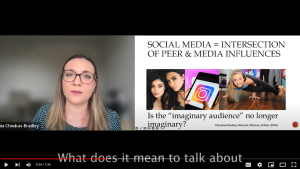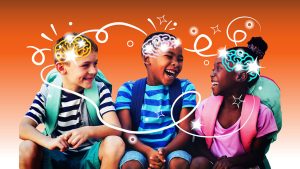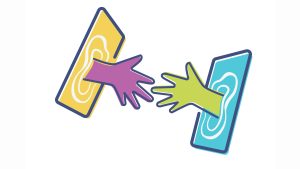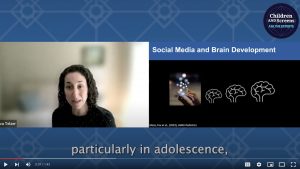
Sophia Choukas-Bradley, PhD (Assistant Professor of Psychology, Director, Teen and Young Adult Lab (TAYA Lab), University of Pittsburgh), discusses research into the specific characteristics of social media that affect social relationships in youth at #AskTheExperts webinar “Mirror, Mirror, in My Palm: Girls and Media” on September 7, 2022.
[Dr. Choukas Bradley] So social media really involves the intersection of peer influences and mass media influences. So, for example, celebrities, influencers. So those who became famous because of social media and one’s peers, for example, are high school girls. Classmates are all shown within one space. And I think this is creating a really complex new environment where the imaginary audience may actually not even be imaginary anymore. What does it mean to talk about the imaginary audience, this cognitive phenomenon we’ve always known about in adolescence, in an era where any moment could be photographed and broadcast to a huge network of peers and even strangers. I’ve done some work with Mitch Prinstein and Jackie Nishi about how social media might transform interpersonal relationships. And these are some of the specific features of social media. We’ve proposed that could affect interpersonal relationships and body image and mental health. Availability refers to the 24/7 nature of social media, where if kids have phones in their bedrooms, they are able to access social media in any given moment 24/7. I’ll skip some of these, but a big one is quantifiability. Kids can now see actual quantifiable metrics of the number of likes, friends, and followers they have and that they receive in response to specific posts.
View the Full Webinar

Mirror, Mirror, in My Palm: Girls and Media
How does online media affect girls' mental and physical health as they navigate through the increasingly tricky waters of social media and digital interactions?
Elizabeth Englander, PhD
Executive Director and Founder; Professor of Psychology
Lisa Damour, PhD
Psychologist, Author
Meenakshi Gigi Durham, PhD
Professor and Collegiate Scholar,
Sophia Choukas-Bradley, PhD
Assistant Professor of Psychology; Director,
Lanice Avery, PhD
Assistant Professor of Psychology and Women, Gender, and Sexuality Studies; Director




